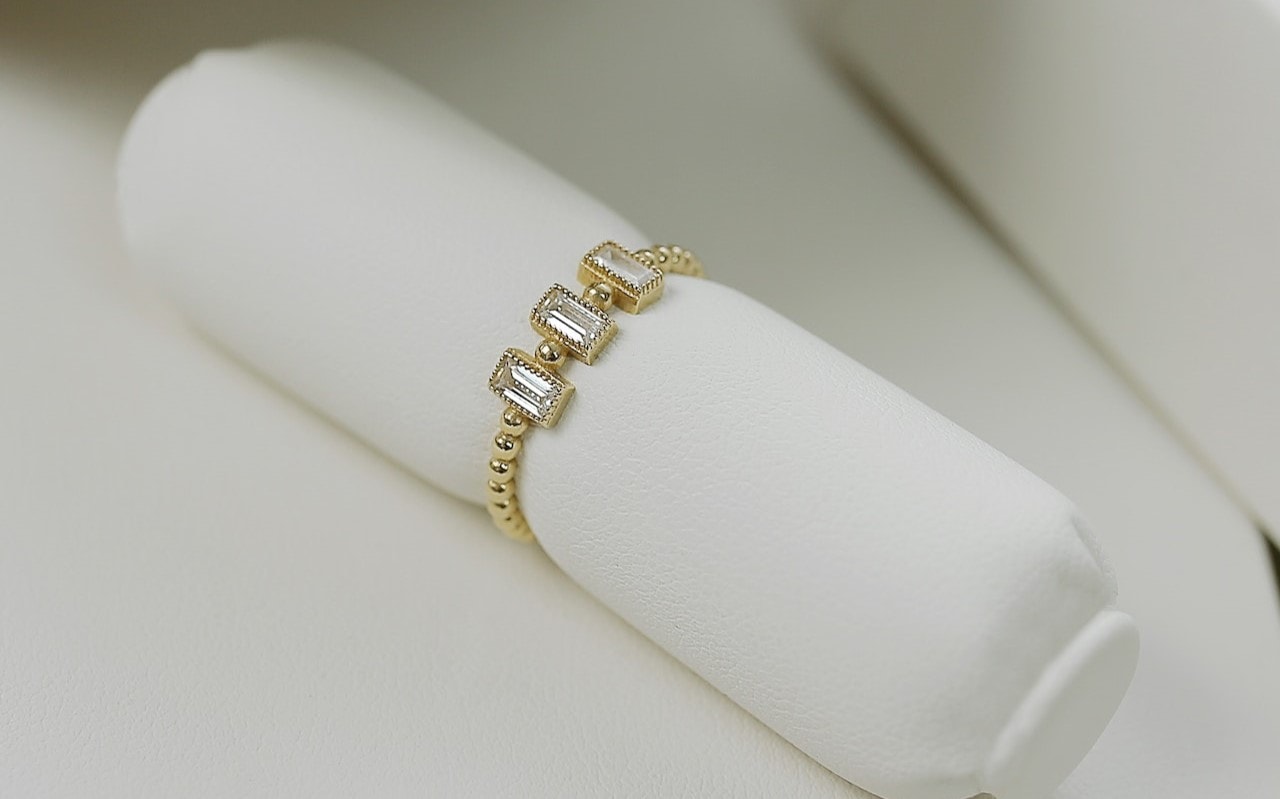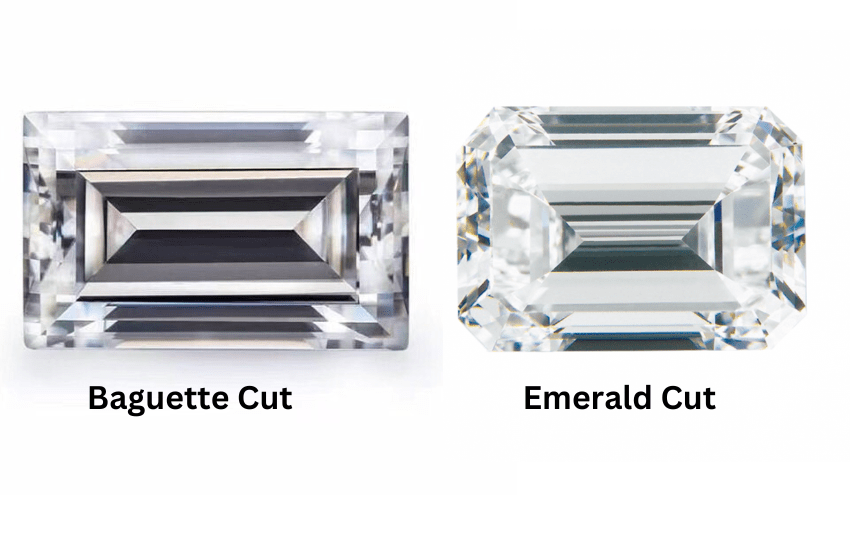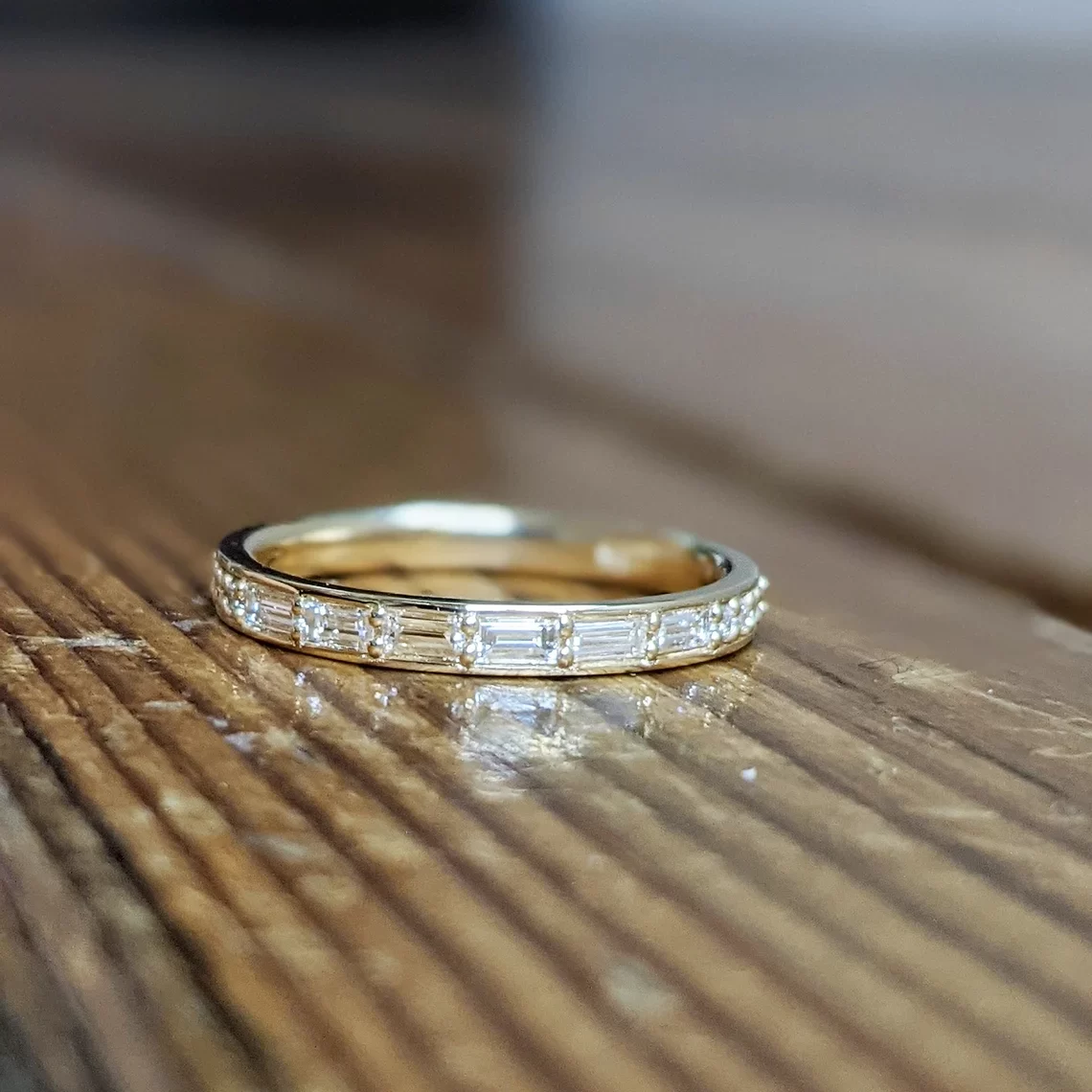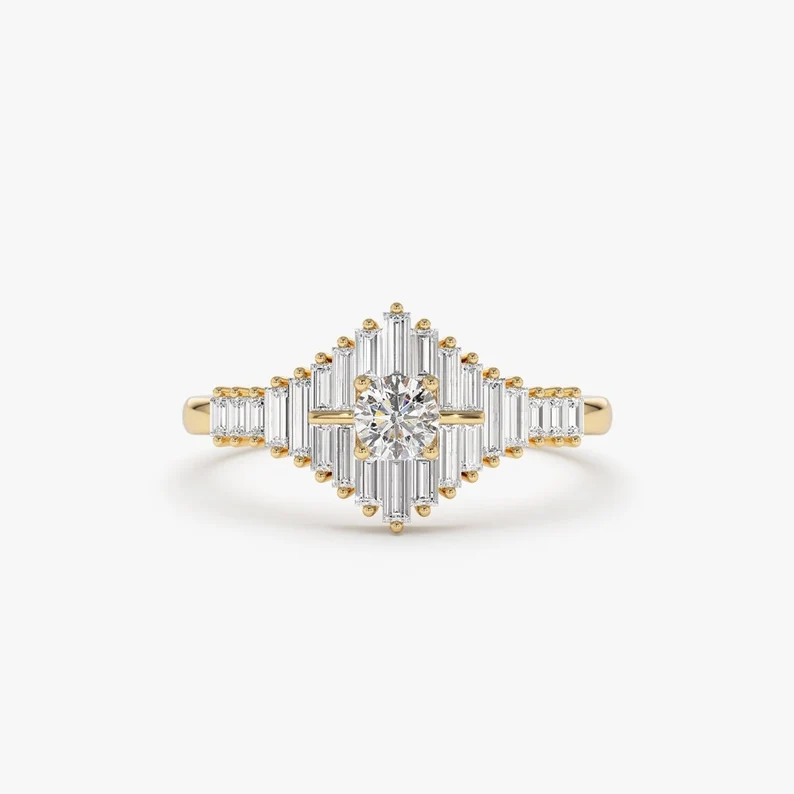
Table of Contents
Everyone’s heard of the three or four most famous diamond cuts out there but what about some of the more niche types such as the Baguette cut? It may surprise some that the Baguette cut is actually one of the most commonly used diamond cuts in the modern jewelry world and has been since its inception about a century ago.
So, what exactly is a Baguette cut diamond, what should you know about it, what are its pros and cons, and should you pick it for your next ring or piece of jewelry? Here’s our quick guide on the Baguette cut diamond.
What Is A Baguette Cut?

At first glance and to an untrained eye, a Baguette cut diamond can look very similar to the more famous Emerald cut. Both are rectangular – not quite square but also not as elongated as an actual French baguette bread – and both look quite good, especially when the stone itself is clear and doesn’t have many inclusions.
What makes the Baguette cut different, however, are two very unique characteristics:
1. Number of Facets
Baguette cuts have only 14 facets – that’s nearly 4x times fewer than most other diamond cuts, including the Emerald cut, as the standard for most cuts is 50 to 58 facets.
What exactly is a diamond cut’s facet? Those are the flat sides or surfaces on the finished stone. The reason most cuts have so many facets is that help reflects light inside the diamond as much as possible and drastically improve its brilliance.
In other words, by only having 14 facets, the Baguette cut isn’t just easier to make – it also reflects less light and isn’t as brilliant as other cuts.
2. Thinness of the Cut

The Baguette is also much thinner than other rectangular cuts such as the Emerald. While the first two dimensions – the length and the width – of the Baguette are pretty standard for a rectangular cut, its third dimension – the thickness – is drastically different.
In most Baguettes, the stone is usually 5 times thinner than it is long – this 5:1 ratio is unprecedented in most other cuts. It also affects the Baguette’s brilliance as the Baguette is too thin to reflect light as much as the Round, Princess, Emerald, and other cuts.
At face value, both of these specifics sound like negatives. And, from a certain point of view, they are. The rule of thumb for jewelry diamond cuts is that the more brilliance they have, the better. If so, why is the Baguette cut what it is?
The History And Evolution Of The Baguette Cut
The simple explanation for why the Baguette cut is the way it is is that it wasn’t initially intended as a centerpiece stone. In fact – it still isn’t.
Baguettes are simultaneously so common and so unfamiliar to the general public because they are mostly used as side stones for the big centerpiece jewel – they are pretty enough to enhance the overall beauty of the jewelry piece but not too brilliant as to overshadow the main gemstone.
This was the very intent with which the Baguette cut was popularized back at the beginning of the 20th century between the Art Déco and Art Nouveau periods. The fact that Baguette cuts are easier and faster to make compared to most other 50-faceted stones was also a plus for jewelers.
In essence, Baguettes started off as smaller, shallower, simpler, and less brilliant but still pretty mini-Emerald cuts that were to be used exclusively as side stones. With time, however, people started warming up to the idea of a centerpiece Baguette cut diamond as they realized that even this cut’s drawbacks conceal a few interesting positives.
What Are The Pros And Cons Of The Baguette Cut?

So, let’s go over a quick breakdown of the exact pros and cons of the Baguette cut now that we know what it looks like.
Pros:
- This simple cut with a low facet count is usually made out of stones with exceptionally good clarity and with very few inclusions. That’s because the low number of facets makes inclusions very easy to spot, so, Baguette stones often look captivatingly beautiful despite their relatively low brilliance.
- The Baguette cut is probably the best epitome of the maxim “beauty in simplicity” – its minimalist style is why it became so popular during the Art Déco period and why it fits so well with many modern jewelry trends. So, even though it was not intended as a centerpiece stone, it’s not that uncommon anymore to find great quality rings and jewelry with a large Baguette centerpiece diamond.
- The true strength of the Baguette lies not in its use as a solo diamond, however, but together with many other tiny Baguettes. This way, rings and bands covered with a pavement of small Baguettes can give you a look that’s as unique as it is gorgeous.
- The power of the Baguette cut as a side stone is not to be underestimated either. The fact that this cut is less brilliant than most others sounds like a drawback but it’s what makes it such a perfect companion stone – it looks great but it doesn’t overshadow the main piece.
- And then there are the very extravagant and borderline ridiculous things you can do with such a unique cut – take a look at this fascinating beauty, for example.
- Naturally, as a simpler and usually smaller cut, the Baguette is usually less pricey than other cuts too. This makes it a great way to save a part of your budget for a higher clarity grade, a larger carat weight, or other aspects of the jewelry piece.
Cons:
- Even if there are ways to spin the Baguette’s low brilliance into a positive, it is also negative at the end of the day. Diamonds are meant to sparkle and dazzle, and the Baguette – on its own – doesn’t look as good as other solo diamond cuts.
- The Baguette’s rectangular shape gives it another drawback shared by most other rectangular cuts – it’s easier to knock and damage through long-term wear and tear. This also restricts the number of settings that are suitable for a Baguette cut with solitaire or solitaire pavé being the most commonly recommended.
- The Baguette’s low facet count can look great if the clarity of the stone is great and there aren’t many inclusions but the reverse is also true – Baguettes look awful if the quality of the stone isn’t great.
You could say that the same is true for other cuts but not to that extent – when a stone has 50 or more facets, they partly hide some of the inclusions again. That’s a side feature the Baguette doesn’t benefit from. - Most Baguette cut diamonds are quite small for a centerpiece stone and it can be difficult to find a large enough Baguette that also has the required visual quality to look good.
Wrapping Up
In conclusion, the Baguette diamond cut is unique in many ways and definitely deserves more love than it is getting. However, it has a somewhat niche use as a side stone, so, if you’re not looking for a pave ring or a jewelry piece with lots of side stones, the Baguette may not be the right cut for you.
Still, there are uses of the Baguette outside of it being a great pave and/or side stone too. Its simple cut looks great with a modern minimalistic style, for example – that way, a large enough Baguette can even work great as a solo centerpiece gemstone.
Just make sure that the clarity of the stone is definitely good enough – while one of the charms of the Baguette cut is that it’s clear like an open book, that can also be a problem if its insides are not up to par.









